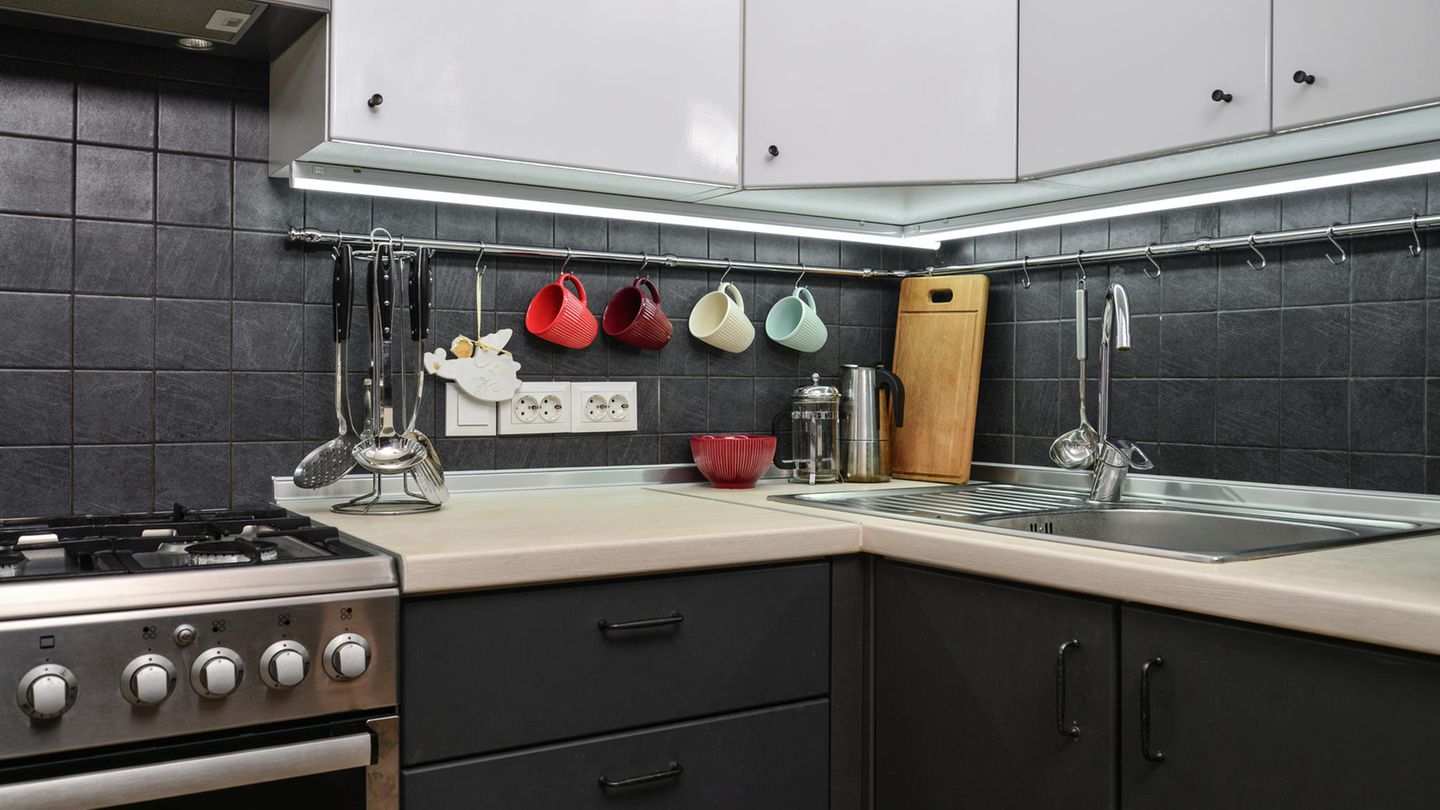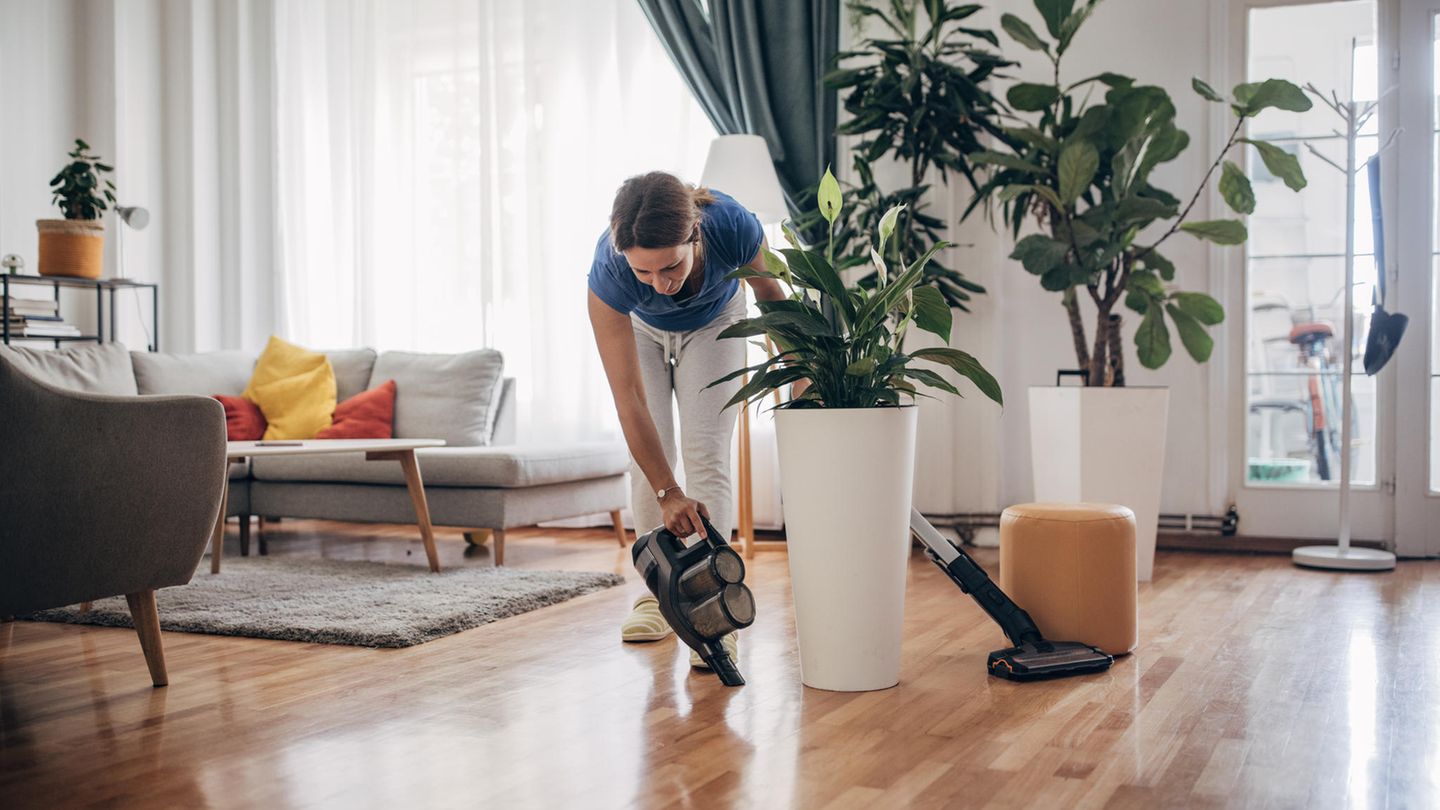Your kitchen is bursting at the seams and you’re desperately looking for new storage space? With the right system, you can create more space and order. Find out exactly how it works here.
It is one of the most used rooms and that is precisely why it often descends into chaos: the kitchen. Although there is plenty of storage space here, the upper and lower cabinets, drawers and shelves are jam-packed. But is it really because you have been hoarding more and more food in recent years – or could it be that you have scattered dishes and cutlery, pots and pans, spices and baked goods around the kitchen without any real system? The next time you catch yourself looking for something specific for more than five minutes but cannot find it, you should perhaps rethink your organization system and reorganize the kitchen.
Clean out your kitchen
Even if it’s not much fun, clearing out is still necessary – and the first step towards improvement: Empty all the cupboards and drawers in your kitchen and sort out everything that is broken, duplicated or unusable. The things either end up in the trash or you can donate the discarded items that are too good to throw away but no longer have a place in your kitchen.
The second step is to thoroughly clean the kitchen cupboards and drawers once they have been emptied – you won’t have the opportunity to do so again so make use of it! Before you put all the remaining items back in, it makes sense to divide them into different categories, i.e. dishes and cutlery, pots and pans, cans and spices.
The same applies to your food: Divide your stocks so that you always keep together the foods you use more often, those you have bought in bulk and those you need for cooking. Also pay attention to which foods are not as long-lasting so that they don’t end up in the trash. This does not apply to canned goods – the contents can be consumed for much longer than stated.
Clean up the drawers
Do you also have a kind of “junk drawer” in which you store all kinds of things that you think you might use again at some point? Then you have probably long since lost track of things. Here you can bring more order into the system by creating a So-called drawer organizers are available in different sizes and different designs, here is an example:
Keep everything close at hand
Store all household utensils so that everything you need frequently is within easy reach. In other words, the drawers near the stove are best for cutlery or the spices you need for cooking – there are also Pots and pans should be placed near the cooking surface, sharp knives near the work surface: for example, use a space-saving which is attached to the wall.
Make full use of the interior cabinets
Far too often, valuable storage space is wasted: starting with the trash can, which in many households is placed in the base cabinets. Apart from the fact that food scraps release moisture and thus mold forms more quickly, the space can be used very well for other purposes. Instead, use a separate that you put in the kitchen.
Does your kitchen have a corner cupboard? Then you probably store many household appliances there, such as a that you do not use so often – because they are difficult to reach. Instead, use a special which offers space on several levels and can be rotated so that you can easily reach everything. The cheaper alternative would be a .
Sort your food
Regardless of whether you have a pantry or just a drawer or a base cabinet in which you store food, you can also create order here by systematically organizing the stocks. All products that are used most often get the best place. To give you a better overview, recommended, which you should ideally label (do not confuse salt and sugar) – for example with a .
Create more storage space
It is particularly difficult to create storage space in small kitchens. At least that is what most people think. In fact, there are many little tricks that will help you to create more storage space – no matter how big the room is. Use the doors of the kitchen cabinets to hang smaller items on the inside. There are also special devices for this, such as adjustable (plus kitchen hook), a or even a (for example cups).
Arrange the refrigerator properly
You can also organize your refrigerator, because what many people don’t know is that every appliance has different climate zones, meaning that the temperature varies between the individual compartments. If the refrigerator is set to the recommended average temperature of seven degrees, the temperature in the vegetable compartment (at the very bottom) will be around twelve degrees, while the temperature in the top compartment will be just under four degrees – and there’s a good reason for this: it helps keep food for longer. However, eggs, milk and vegetables like different temperatures, and some foods have no place in the refrigerator at all. So it’s best to proceed as follows when putting things away.
- As the name suggests, the vegetable compartment at the bottom of the refrigerator is best suited for sensitive foods such as salad, fruit and vegetables – the temperature here is between ten and 13 degrees.
- All foods that spoil particularly quickly, such as fresh fish and meat, but also sausage and cheese, should be stored in the lowest compartment – the temperature here is between four and five degrees.
- All dairy products feel particularly comfortable in the middle compartment, i.e. quark and yoghurt dishes, cream and milk, but also fresh eggs – the temperature here is ideally between six and seven degrees.
- The top compartment is the warmest because warm air rises. This is the best place to store prepared food or sauces and jams – the temperature here is between seven and ten degrees.
Tip: You can check the temperatures with a special .
There are also different climate zones in the refrigerator door. The best way to arrange food here is as follows:
- Drinks go at the bottom – except for milk, it is too warm for that
- Mustard, ketchup and mayonnaise or dressings go in the middle compartment
- Butter and margarine, i.e. foods that keep for a long time, go in the upper compartment
And one last tip: tomatoes, lemons, garlic, onions, avocados and bananas do not belong in the refrigerator – these foods should be stored at room temperature as they cannot develop their full aroma at cold temperatures.
More information can be found here.
Source: Stern
I am an author and journalist who has worked in the entertainment industry for over a decade. I currently work as a news editor at a major news website, and my focus is on covering the latest trends in entertainment. I also write occasional pieces for other outlets, and have authored two books about the entertainment industry.




